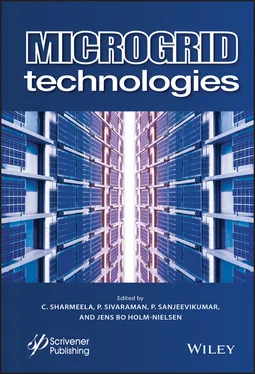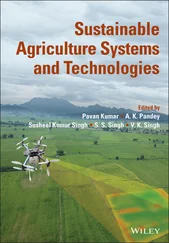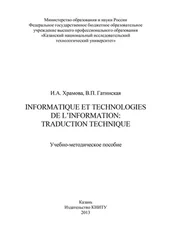1.2.3 Power and Heat Integration in Management System
The heat or thermal energy can be generated concurrently with electricity in HPC systems. The heat can be used for some other purposes such as space heating, water heating, etc. The efficiency can be enhanced with the help of HPC, in which the waste energy as heat is used for various thermal utilizations, therefore minimizing energy loss during distribution or transmission. The Cooling–Heating-Power-Combination (CHPC) is further called as tri-generation micro-grid. It is capable of providing heat, cooling and power to the consumer as required. In Ref. [16] an optimized model of a tri-generation micro-grid (CHPC) is discussed. In this case, the CHPC deals with the uncertainty of energy demand such as heating, cooling and electricity. An MSE for HPC of a GC Micro-grid optimally operates the grid and dispatches the HPC. The micro-grid supplies electrical and thermal energy requirements. In Ref. [17], the author discussed a management system of energy for HPC for a micro-grid connected to the grid, which can plan grid operation and HPC send-off optimally. The MG is taken as supply of electricity and thermal energy as required. The given methods have been concluded that V2G operation achieves a minimum rate of the objective function as compared to the operating strategies of MG with no V2G and the micro-grid with a conventional vehicle. A large-scale electric vehicle charging station is proposed in Ref. [11], where solar and wind energy is combined to supply the total power required. Here both arrays of solar panels and wind power generators work through a combined MPPT technique. The author combined the plug-in hybrid electric vehicle charger working in V2G mode with the distribution grid by the converters like rectifiers and choppers [12]. They are connected to the DC-link with the capacitor. This DC-link capacitor offers compensation of reactive power. So, this V2G charger is able to adjust the voltage of the grid by employing a capacitor at the link of dc. So, the problem of voltage drop can be avoided in the grid. This energy could be used to level the load and to shave the peak load. The authors presented an actual execution of EV charging station in the company, including an energy storing system like Li-polymer battery. The authors of Ref. [14] offered an idea about resiliency-based MSE for a micro-grid working in islanded condition. That case study was on a micro-grid consisting of PV farm, WT farm, and battery. The researchers applied 25 plug-in hybrid EC as the controllable design of supply and demand, which are optimized to show the conception of demand–supply relation. In V2G mode the plug-in EV can be considered as adjustable generation and in G2V mode the plug-in EV can be considered as adjustable demand. The authors of Ref. [15] discussed systematic management of energy for a smart home including plug-in EV (PEV) and PV panels to minimize costs during a time of use tariff, which supplies the home load and energy required to charge the PEV. A Li-ion battery is used in the PEV, which is controlled by a bidirectional converter. It allows power flow in both directions. Here the Markov Chain model is applied to design the mobility of PEV. The predictive model is used to design a home as a load and the dispersed power generation. This guaranties the cost-saving at the consumer’s end. The total power flow is managed by the proposed energy management system.
1.2.4 Combination of Heat and Electrical Power System
The thermal energy also simultaneously can be generated with the electrical energy in the HPC systems, which can offer heat or thermal energy for diverse uses, like residential heating, cooling and water heating, etc. The power efficiency can be enhanced by HPC, in which the unused heat can be utilized for different heat applications, so distribution or transmission losses can be minimized. The cooling–heating-power-combination (CHPC), which is also called as tri-generation micro-grid can provide heating, cooling and electrical power to the users. In Ref. [16] it is discussed about the optimized model of tri-generation micro-grid, cooling–heating-power-combination (CHPC). In Ref. [17], the grid and HPC operation is optimally planned for MSE of HPC in GC-MG. The required electric and thermal energy can be supplied by the micro-grid.
1.3 System of Energy Management
Extensive research has been going on upon the application of an energy management system in micro-grid operated in either connected with grid network mode or isolated from grid mode. For optimal MSE the objective function has to be defined following the system constraints (mechanism and functioning mode). The MSE puts a significant impact on the environment, the life span of the generation unit and system performance. The energy management modeling is the uncertainty modeling techniques with specific objective functions and constraints [18–24].
An MSE will be able to implement in two manners, such as integrated and disintegrated. In integrated MSE there is a central controller that controls the exchange of power in MG and optimizes that with respect to market prices and security constriction. In the MG having decentralized MSE, distributed supplies and loads are having a higher degree of freedom, and it maximizes the revenue by communicating the components of MG with each other. The main aim of any MSE is to maintain the load–supply balance [25, 26].
1.3.1 Classification of MSE
According to literature, the MG energy management system is categorized into four groups:
1 a. MSE based on conventional sources
2 b. MSE based on SSE
3 c. MSE based on DSM
4 d. MSE based on Hybrid system.
1.3.1.1 MSE Based on Conventional Sources
According to this MSE during the failure of the energy storage system, the renewable energy sources are used with a backup source of energy like gas engines, diesel generators and microturbines in the MG [21].
The MGs face problems in managing the non-conventional sources like solar energy and wind energy because of its fluctuating nature. Often there is a variation in forecasted and real-time production of energy. SSE (storage system of energy) is the best solution to this problem. The SSE maintains a balance between energy production and consumption as load by preserving power during low-peak times and releasing power during high-peak time. Different optimization techniques are focused on improving the utilization in MG [27–29].
An additional way to deal with the energy unbalance in supply and load in MG is the utilization of DSM (demand-side management). The goal of this MSE technique is to match the generated power with power consumption by modifying customers’ behavior or load profile [30, 31]. The DSM is divided into to categories:
1 i) Energy efficiency: This minimizes the consumption of power with increasing the commodities effectiveness at the demand side.
2 ii) Demand reaction: This (DR) changes the amount of power handling by the consumer in the response of changes in the price of electricity and encouragement payments as an aim to minimize the power expenditure during high-price hours or peak time or when the system is facing any threat in reliability.
The DR skims categorized in two ways. Such as: based on price DR and based on incentive DR [32].
1.3.1.4 MSE Based on Hybrid System
In this type, more than one of the above-mentioned types is practised together to solve MSE problems in the micro-grid [33].
1.3.2 Steps of MSE During Problem Solving
Читать дальше











